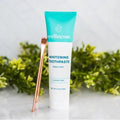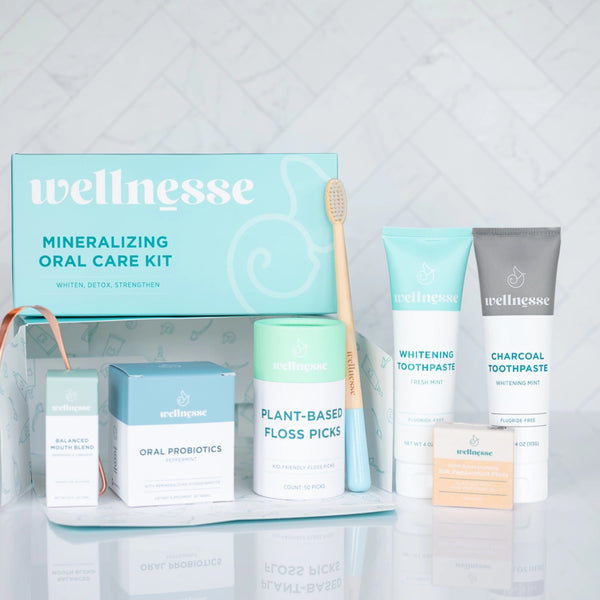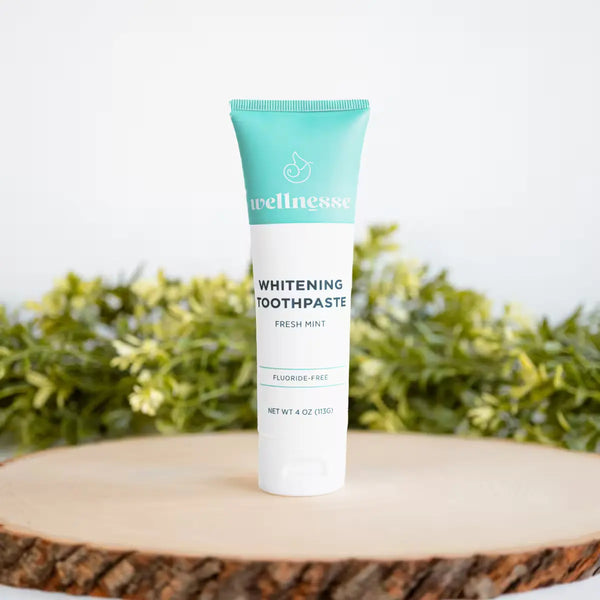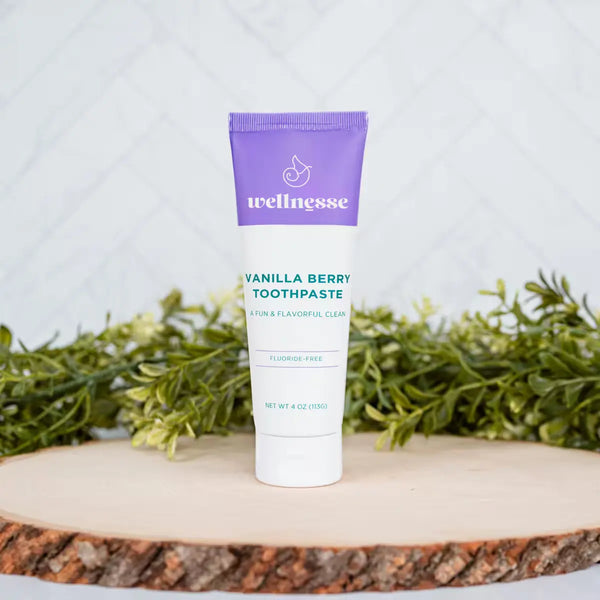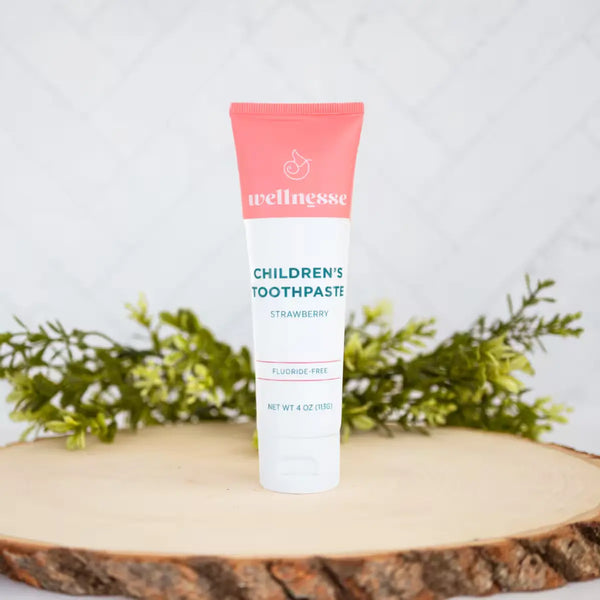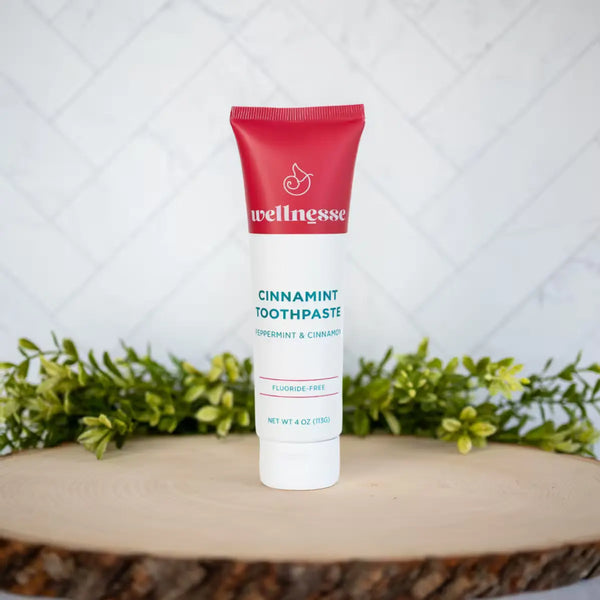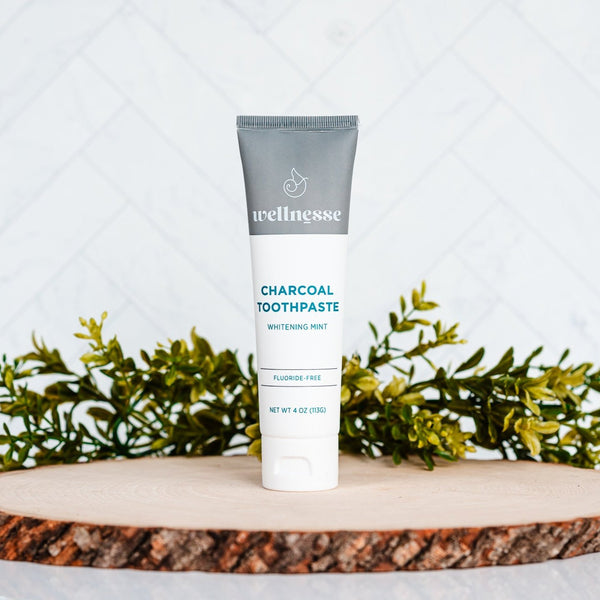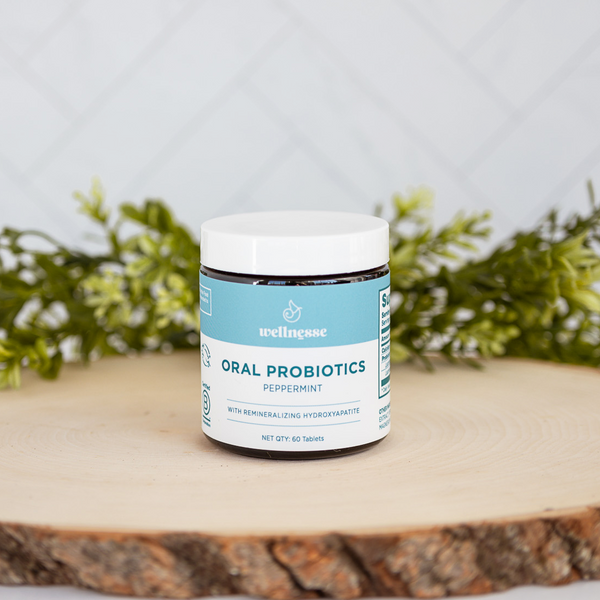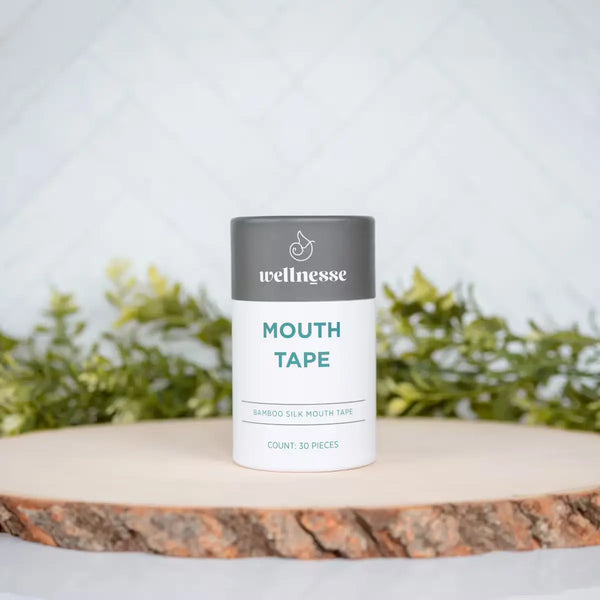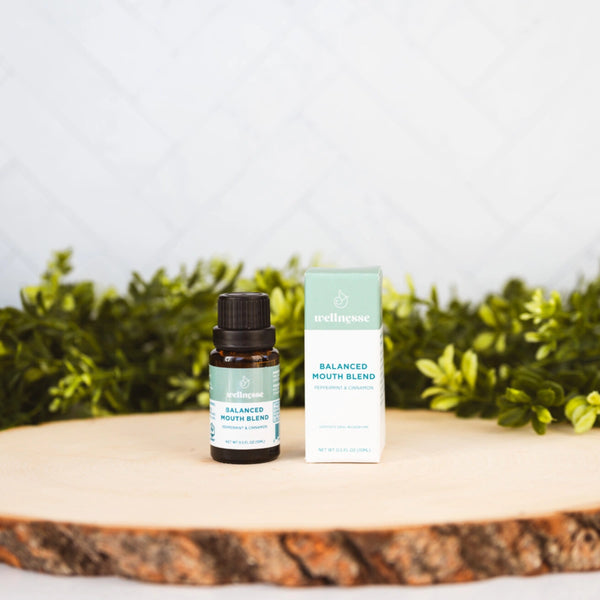Many people today are seeking a natural whitening toothpaste to brighten their smile without the harsh chemicals or side effects of traditional whiteners. Conventional whitening products often rely on abrasive particles or peroxide bleaches, which can lead to issues like enamel abrasion, tooth sensitivity, gum irritation, and even genotoxic effects. Such drawbacks have spurred interest in gentler whitening agents for enamel that can remove stains while actually supporting tooth health. This article will explore the leading natural alternatives that promise to safely and effectively whiten teeth.

Causes of Tooth Discoloration
Understanding why teeth become discolored is essential before exploring natural whitening solutions. Tooth discoloration is generally categorized into two main types: intrinsic and extrinsic causes, each affecting the color and appearance of teeth in distinct ways. Intrinsic discoloration refers to changes that occur within the tooth itself. The most common intrinsic cause is the thinning or erosion of enamel, the hard, white outer layer that protects teeth. Enamel can wear down over time due to the consumption of acidic foods and drinks, aggressive brushing, or natural aging. As enamel becomes thinner, it exposes more of the underlying dentin—a dense, yellowish tissue that makes up the bulk of the tooth. Because dentin is naturally darker than enamel, teeth may appear more yellow or dull as the enamel layer diminishes. Certain medications can also cause intrinsic stains. For example, the use of tetracycline antibiotics during childhood, when teeth are still developing, can result in a grayish or brownish discoloration that is difficult to remove. Additionally, excessive fluoride exposure during tooth development can lead to white spots or streaks on the enamel. Trauma to the tooth, such as a fall or blow, can disrupt enamel formation or cause internal bleeding, leading to permanent discoloration from within.
Extrinsic discoloration, on the other hand, involves staining on the outer surface of the tooth. This type is primarily caused by external factors that come into contact with the enamel. The most common culprits are foods and beverages rich in pigments, which can leave color deposits on the enamel over time. Smoking or chewing tobacco is another major contributor, as the tar and nicotine in tobacco products can cause stubborn yellow or brown stains. Poor oral hygiene is also a significant factor; when plaque accumulates on teeth, it can harden into tartar, which not only harbors stains but can also make discoloration more pronounced and more complex to remove. Even regular exposure to chlorhexidine-based mouthwashes or iron supplements can cause surface staining. Aging is a natural factor that contributes to both intrinsic and extrinsic discoloration. As we age, enamel gradually wears away, and years of exposure to staining substances accumulate. The result is often a gradual shift from bright white to a more yellow or grayish hue.
Hydroxyapatite: Nature’s Enamel Restorer and Whitener
One of the most promising innovations in oral care is the micro-hydroxyapatite toothpaste for whitening and remineralizing teeth. Hydroxyapatite is a form of calcium phosphate that comprises approximately 97% of tooth enamel, allowing it to integrate seamlessly into the teeth. In toothpaste form, tiny hydroxyapatite particles fill in microscopic cracks and defects in the enamel. By literally re-depositing the mineral crystals that were lost, a hydroxyapatite remineralizing toothpaste helps rebuild the tooth surface. This remineralization not only makes enamel stronger and less sensitive but also creates a smoother, glossier surface that reflects light better, translating into a whiter appearance.
Hydroxyapatite’s whitening effect is fundamentally different from that of peroxide-based bleaches. Instead of bleaching the tooth from within, HAP works by restoring the enamel’s natural brightness. The mineral itself is pure white, so when it binds to the tooth surface, it can mask minor discolorations and add brightness. Using such a toothpaste can strengthen enamel, repair micro-cracks, and even whiten teeth over time as the new mineral fills in stained enamel pores. Unlike fluoride, which does not whiten teeth and can carry risks like fluorosis if overused, hydroxyapatite is biocompatible and non-toxic.
HAP is safe enough to swallow in small amounts, making it a popular fluoride-free toothpaste with hydroxyapatite for those wary of fluoride’s side effects. This ingredient has been used in Japan for decades, and growing research indicates that it can protect against cavities as effectively as fluoride, while also contributing to a brighter smile. Another advantage is that a hydroxyapatite formula is inherently gentle. Because it bonds with the tooth rather than scrubbing it, it requires little to no abrasive content. This makes HAP toothpaste a true enamel care toothpaste that can whiten without wearing down your teeth.
Over time, regularly brushing with a whitening toothpaste with hydroxyapatite may lead to teeth that not only look whiter, but are actually healthier and more resilient. Given these benefits, it’s no surprise that forward-thinking oral care brands have embraced hydroxyapatite. Even major natural personal care companies like Wellnesse now offer a fluoride-free toothpaste as a way to safely whiten and remineralize teeth in one step. For consumers looking for the most advanced plant-based tooth whitening alternative, a HAP toothpaste is a top contender.
Activated Charcoal: Abrasive Trend in Whitening
Another popular natural whitening trend is using charcoal-based toothpaste or powders. Activated charcoal, usually made from coconut shells or wood, is highly porous and adsorbent. When applied to teeth, it’s thought to bind to compounds that cause stains and lift them away. Charcoal is also very abrasive, giving it a scrubbing action that can physically remove some surface stains and plaque. This dual action is what made charcoal toothpastes explode in popularity as a DIY whitening hack.
It’s also worth noting that most charcoal toothpastes are sold in the natural product market and thus typically omit fluoride and other remineralizing agents. For those specifically looking for fluoride-free options, this is part of the appeal. If you do choose to use charcoal, dentists suggest using it sparingly rather than as a daily toothpaste. Always use a soft-bristled brush and gentle pressure, since the charcoal itself provides heavy abrasion. Consider following up with a standard or remineralizing paste to restore any lost minerals and ensure your enamel remains strong. Activated charcoal can play a role in herbal teeth whitening routines as a natural polisher.
Oil Pulling with Coconut Oil: Traditional Practice for a Brighter Smile
The technique is simple: you take a spoonful of coconut oil and swish it vigorously between your teeth and around your mouth for 10–20 minutes, then spit it out. Advocates claim this daily ritual “pulls” out bacteria and toxins, helping to reduce plaque, freshen breath, improve gum health, and gradually whiten teeth by removing stain-causing debris. Coconut oil has been shown to possess antimicrobial and anti-inflammatory properties, which can indeed benefit oral hygiene. Swishing with oil may dislodge some plaque and food particles simply by the mechanical action of moving the viscous oil around.
From a safety standpoint, coconut oil pulling is relatively low risk. It doesn’t involve any abrasives or acids that could harm enamel. At worst, it may not significantly improve whitening, but it can still be a beneficial addition to your oral health routine. Users often report their mouth feels cleaner and breath fresher after a pulling session. If you enjoy the practice, there’s little downside to it as long as it’s done in addition to regular brushing and flossing. Think of oil pulling as a supplemental oral care step – it may help reduce bacteria and plaque load, which can indirectly keep new stains at bay and improve gum health, giving teeth a healthier sheen. Just manage expectations that this is not a rapid whitening agent.
Herbal and Plant-Based Whitening Remedies
Long before the advent of commercial toothpaste, people around the world used plants and herbs to clean and whiten their teeth. Today, there is renewed interest in these herbal teeth whitening methods, both in their traditional forms and as ingredients in natural toothpastes. One of the most famous is the miswak stick, which is a twig from the Salvadora persica tree. Miswak has been used for oral care for centuries in the Middle East, Africa, and South Asia. When you chew on one end of the stick, it forms a fibrous brush. People then scrub their teeth with this natural brush, and the twig’s juices release antibacterial and cleansing compounds. Modern research on miswak shows it has multiple oral health benefits – it’s been found to reduce plaque and gum inflammation, inhibit bacteria, and even possess whitening properties for teeth.
Another plant used similarly is neem (Azadirachta indica). In Indian villages, neem twigs have traditionally served as “datun” (natural toothbrushes). Neem has strong antibacterial effects and can help prevent plaque buildup. While its primary benefit is gum health and cavity prevention, a side effect of reduced plaque and tartar is that teeth don’t develop as much yellowish biofilm, which can make them appear brighter. Several herbal tooth powders in Ayurveda combine neem with other ingredients like clove, babool bark, charcoal, salt, or even turmeric. Turmeric is an interesting case: it’s bright yellow and can temporarily stain the toothbrush or even teeth, yet it’s often recommended in DIY tooth whitening masks.

When it comes to plant-based tooth whitening in modern products, a number of herbal extracts are being added to natural toothpaste formulas. For example, some whitening toothpastes include papaya leaf or pineapple extracts not just for enzymes but also for their mild astringency. Certain essential oils provide antibacterial action and a fresh scent; while they don’t bleach teeth, they contribute to overall oral cleanliness, which indirectly helps keep stains at bay. Baking soda, though not an herb, is a naturally occurring substance commonly found in “natural whitening” pastes – it’s a mild abrasive and also alkaline, which can help counteract tooth-yellowing acids in the mouth. Clay powders, such as kaolin or bentonite, are another earthy ingredient sometimes used to gently absorb toxins and polish the teeth.
It’s important to set realistic expectations for herbal whitening approaches. They usually excel at cleaning the teeth and preventing discoloration more than dramatically bleaching an already discolored tooth. But as part of daily oral care, they can gradually improve the whiteness of your teeth by keeping calculus and stains to a minimum. Moreover, they do so while often improving oral health rather than risking side effects. For example, a study on a herbal tooth powder might find that it significantly reduces plaque and tooth yellowness over several months of use. If you are drawn to traditional or botanical oral care, incorporating items like a miswak stick, neem-based toothpaste, or other plant-derived powders can be a safe way to support a whiter smile.
Enzyme-Based Whitening Toothpastes
A newer category of natural whitening agents involves enzymes extracted from fruits. An enzyme-based whitening toothpaste utilizes proteolytic (protein-dissolving) enzymes to help break down the protein pellicle layer on teeth and remove stains. Two of the most commonly used enzymes are papain (from papaya) and bromelain (from pineapple). These enzymes can gently chemically “chew up” the organic molecules that make up stains or the protein film on teeth, making it easier to brush stains away without harsh abrasives.
Enzyme whitening is appealing because it’s a non-abrasive, non-bleaching approach – essentially using biology to fight stains. Papain has long been used as a meat tenderizer because it breaks down proteins; on teeth, it can similarly break down the protein components that bacteria and food byproducts stick to. Bromelain from pineapple stems has shown an ability to degrade plaque matrix and also lighten stains in lab studies. Some whitening toothpaste formulations combine these with another plant enzyme called ficin to target stains from different angles. In an interesting study, researchers compared natural enzyme-based gels to a standard peroxide whitening gel. They found that gels containing bromelain and ficin produced a color improvement in stained teeth comparable to traditional peroxide gel, with the added benefit of causing less enamel damage. The enzyme-treated teeth in that study showed no significant erosion; if anything, there was a hint that enzymes might even make the enamel surface smoother or harder by removing the pellicle without scratching the enamel itself. Meanwhile, the peroxide caused a roughening of the enamel and was cytotoxic to cells in laboratory tests, whereas the natural enzyme formulas were not.
Prevention of Tooth Stains
One of the most impactful steps is to limit your intake of foods and beverages known for their staining potential. Drinks such as coffee, black tea, red wine, cola, and even dark berry juices are rich in pigments called chromogens and tannins, which readily adhere to enamel and cause discoloration. You don’t have to eliminate these favorites, but being mindful of how and when you consume them can make a significant difference. For example, drinking through a straw can minimize direct contact with your teeth, and rinsing your mouth with water after consumption helps wash away staining compounds before they set. It’s also wise to avoid brushing immediately after consuming acidic beverages, as acids temporarily soften enamel, making it more vulnerable to abrasion.
Smoking and tobacco products are another major source of persistent tooth stains. Tar and nicotine not only yellow teeth but also create a sticky environment that traps additional stains and bacteria. Quitting tobacco use is one of the best decisions you can make for both your oral health and the long-term appearance of your smile. Sugar intake is another key factor in stain prevention. Diets high in sugar promote the growth of plaque-forming bacteria, particularly Streptococcus mutans, which produce acids that erode enamel and allow stains to penetrate more deeply. Reducing sugary snacks and drinks not only helps keep your teeth whiter but also lowers your risk of cavities and gum disease. If you do indulge in sweets, try to pair them with meals rather than as standalone snacks, and wait at least 30 minutes before brushing to avoid damaging softened enamel.
Maintaining adequate calcium intake is essential for protecting against enamel erosion and the yellowing that results when dentin becomes exposed. Calcium-rich foods help strengthen enamel and make it more resistant to acidic attacks and daily wear. If you follow a plant-based diet, be sure to include fortified alternatives or calcium-rich vegetables like broccoli and bok choy.
Choosing the Best Natural Whitening Option
With so many natural whitening strategies available, how do you choose the right one (or combination) for you? Here are a few tips to consider when evaluating natural whitening products and methods:
-
Prioritize enamel safety: The goal is to whiten without weakening your teeth. Agents like hydroxyapatite and papain/bromelain enzymes score high on safety because they strengthen or at least do not harm enamel. In contrast, methods that rely purely on abrasion should be used sparingly or in moderation as an adjunct, not as the main daily driver of whitening. A product advertised as an enamel care toothpaste or toothpaste to restore enamel can indicate it is formulated to protect your teeth as it whitens.
-
Look at the ingredients list: The best natural teeth whitening products typically combine multiple proven ingredients. For example, a whitening toothpaste might include micro-hydroxyapatite for remineralizing and whitening, papain or bromelain enzymes to dissolve stains, and a gentle abrasive like silica or baking soda to polish. Essential oils or herbal extracts are a plus for oral health, but on their own, won’t bleach teeth – they support a cleaner environment. If you see solely abrasive agents, be cautious about daily use.
-
Set realistic expectations: Natural whitening agents generally work more slowly and subtly than high-concentration peroxide treatments. You may not notice significant changes in a few days. However, over several weeks, you can often notice a definite improvement: a lifting of yellow tones, removal of new stains, and an overall brighter sheen as your enamel health improves. The advantage is that this comes without the common downsides of chemical whiteners. Consistency is key – whether it’s oil pulling every morning or brushing with a hydroxyapatite paste twice a day, sticking to the routine is what yields results.
-
Maintain good oral hygiene: No whitening method will be very effective if plaque and tartar are accumulating on your teeth. Regular brushing, flossing, and dental check-ups are fundamentals that support any whitening effort. Natural whiteners are largely preventive or restorative; they work best on a canvas of clean teeth. For instance, oil pulling might reduce bacteria, making your regular brushing more effective. Similarly, enzymes can work to keep stains off only if you are not letting heavy plaque set in. Basic hygiene will also amplify the appearance of whitening – healthy gums (thanks to herbal remedies or oil pulling) will make teeth look nicer by contrast, and a clean enamel surface reflects more light.
You could use a whitening toothpaste with hydroxyapatite as your daily paste to continuously rebuild enamel and gently brighten. Supplement that with occasional charcoal or baking soda brushing for polishing tough stains, and consider doing coconut oil pulling a few times a week to keep oral bacteria in check. Such an integrated routine covers multiple mechanisms: mechanical cleaning, chemical enzyme cleaning, and mineral restoration.

Natural whitening agents beyond hydroxyapatite offer a compelling alternative to harsh chemicals for those seeking a whiter smile. Whether it’s the enamel-building power of hydroxyapatite, the traditional cleansing of miswak sticks, the gentle enzymatic action of fruit extracts, or the home remedy of coconut oil swishing, each approach contributes in its own way to improving tooth color while safeguarding oral health. These methods often work by whitening agents for enamel that enhance the tooth’s surface, removing stains or adding minerals, rather than by penetrating and oxidizing the tooth structure. As a result, they tend to be kinder to our teeth and gums. While you may need a bit more patience to see results compared to a quick peroxide bleach, the end result is a smile that is not only brighter but stronger.
Sources:
-
Shang, R. et al. (2022). Tooth whitening with an experimental toothpaste containing hydroxyapatite nanoparticles. BMC Oral Health, 22, 331 bmcoralhealth.biomedcentral.com.
-
Cronin Dentistry (n.d.). Nano-Hydroxyapatite Toothpaste: Hype or Hope for Your Teeth? croninfamilydentistry.com.
-
Golen, T. (2024). Is charcoal toothpaste safe for my teeth? Harvard Health Publishing health.harvard.edu.
-
Medical News Today. Coconut oil pulling for teeth: How to and benefits medicalnewstoday.com.
-
Almas, K. (2020). Miswak and oral health: An evidence-based review pmc.ncbi.nlm.nih.gov.
-
Today’s RDH. Study Shows Natural Tooth Whiteners as Effective as Peroxide Whiteners todaysrdh.com.
